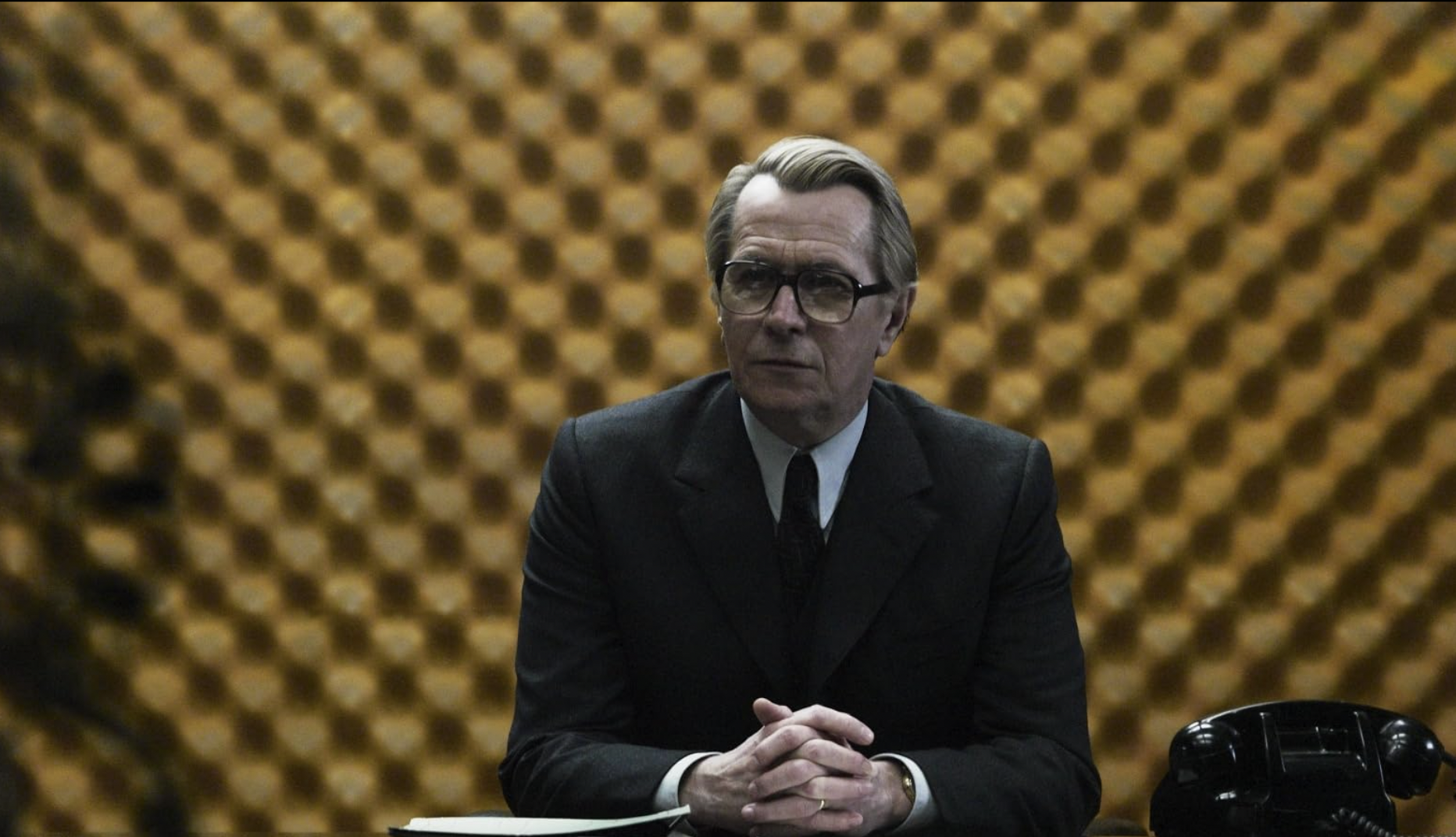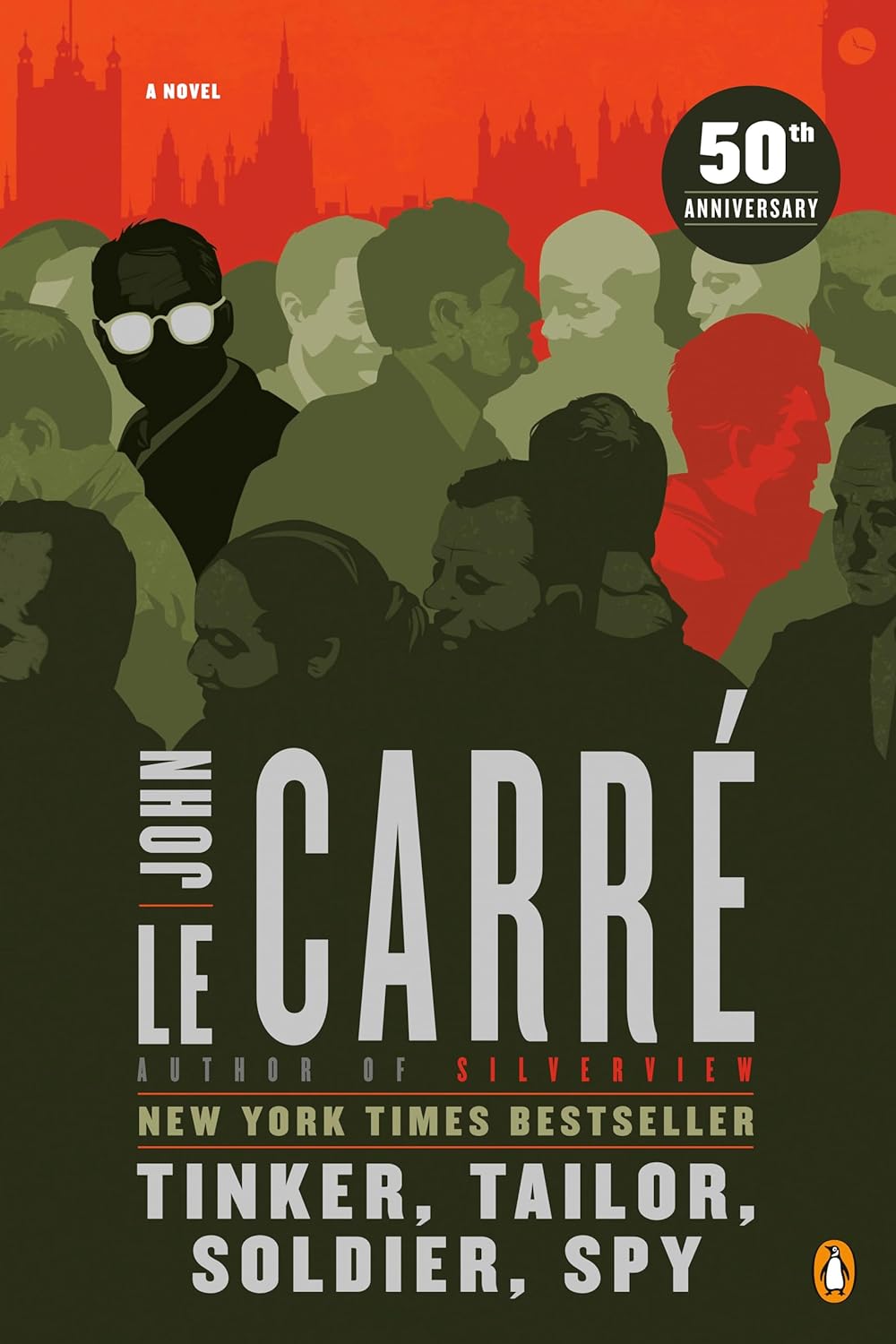This month marks fifty years since the publication of John le Carré’s paradigmatic spy novel Tinker, Tailor, Soldier, Spy. At once a modern chess match between two nations’ spymasters and an updated medieval romance about knightly loyalty and treachery, the book captures the ideological and spiritual exhaustion the British felt at the peak of the Cold War.
The novel has enjoyed a few moments in the spotlight: a much-beloved 1979 BBC miniseries starring Alec Guinness, a 2011 big-screen adaptation that garnered three Oscar nominations, and a key piece of le Carré’s oeuvre that received renewed examination upon his death in 2020. In a review essay for Modern Age in 2018, Mark Tooley recounted the controversial British writer’s strained relationship with conservative critics. Yet Tinker, Tailor remains strikingly timely. A Russian mole infiltrating the intelligence community, radicals recruited on college campuses, widespread political disenchantment, and the seemingly inexorable decline of a once great empire—reading this novel in 2024, one wonders how le Carré could possibly have predicted our current distempers fifty years in advance.
When the novel was published in 1974, Western democracies were grappling with the aftermath of various political crises, and intelligence agencies were viewed with skepticism. Two of the most popular American thrillers from the same year, James Grady’s Six Days of the Condor and William Goldman’s Marathon Man, were action stories concerning a low-level research assistant and graduate student, respectively, getting tangled in the webs of government conspiracies. Not only were intelligence agents not heroic; they were the villains.
The novel resonates deeply with readers who understand the value of national loyalty and the pain of betrayal.
In contrast, Tinker, Tailor is set entirely within the intelligence agency world. “Who can spy on the spies?” a character asks early in the novel. The treacherous mole is an intelligence officer, but so are the heroes who capture him. Yet le Carré made Tinker, Tailor more than a catch-the-criminal thriller. As his obituaries testify, le Carré made the spy novel into art.
In one sense, Tinker, Tailor was ripped from the headlines, based on le Carré’s own time in the Secret Intelligence Service (SIS or MI6) and the actual case of the British spy Kim Philby, who defected to the Soviet Union in 1963. But the novel struck a deep chord because le Carré used the Philby affair to highlight the British Empire’s slow decline following World War II. Even today, its pathos resonates deeply with readers who understand the value of national loyalty and the pain of betrayal.
Le Carré’s novel follows the retired agent George Smiley on his quest to uncover a Soviet mole within the SIS, known familiarly as “the Circus.” The novel is filled with such espionage jargon—lamplighters, scalp hunters, legmen, and stringers—which can be a treat for fans of the spy genre old and new.
The prime suspects are five senior agents, each with a code name from the traditional English nursery rhyme: Tinker (Percy Alleline), Tailor (Bill Haydon), Soldier (Roy Bland), Poor Man (Toby Esterhase), and Beggarman (Smiley himself). The men present a cross section of postwar British authority: Alleline, the politically adept Scot; Haydon, a member of the aristocratic elite who garners comparisons to Lawrence of Arabia; Roy Bland, the son of a radical trade unionist who uses his socialist sympathies to work against Communist Russia; Esterhase, the patriotic Hungarian émigré who is resentful that he has been passed over for promotions; and Smiley, the scholar of Germanic literature who is physically unassuming but analytically brilliant.
“Poor loves. Trained to Empire, trained to rule the waves,” the former Circus researcher Connie Sachs says of these men and those of their generation. Yet as much as these agents feel betrayed by a nation no longer strong enough to bear these grand expectations, they are disillusioned by the revelation that one of their own has consorted with the enemy.
In le Carré’s world, spycraft is a chess game. His grandmaster is the rarely seen Soviet master spy Karla, who thought several moves ahead and recruited an SIS agent for the Soviets in the 1930s while the man was still at Oxford. At the height of the Cold War, Karla springs his trap. The Soviets let the Brits believe they’ve landed a Soviet defector, their own mole in Moscow Center. This double agent feeds them what appears to be valuable secrets. There’s just one catch. This Soviet agent demands some intel in return, the better to cover his tracks. It’s a classic pseudo-sacrifice; your opponent appears to make a blunder and loses a key piece to you—say, a rook or queen—and then a few moves later he has you in checkmate. Karla has, in Smiley’s words, “pulled the Circus inside out.”
The Soviet agent is giving the SIS “chicken feed” while the supposedly worthless intel he receives from the Brits contains ever-more-compromising intelligence: not just technology information but lists and locations of British agents all over Europe and Asia. The irony is that the real prize is the nation the British and Soviets both hate: America. The British will sell their fool’s-gold Russian intel to America for genuine U.S. intelligence, and the mole inside the Circus will simply send those American secrets to Moscow. Britain has been reduced to a pawn, an easily expendable piece in a global political game.
Le Carré hints at the historical and cultural significance of this chess match through the code names that the Circus gives the defector and his trade secrets: “Merlin” and “Witchcraft,” respectively. The names ironically allude to the magus who advised the legendary King Arthur and the mysterious power he wielded in that office. Beyond these overt references to Arthurian archetypes, le Carré has made Smiley and his cohorts modern-day knights. The Circus, named for its location at Cambridge Circus, is a roundabout: a modern roundtable where the knights convene.
The similarities to Arthurian legend don’t stop there. Code name “Merlin” turns out to be much like Mordred, the familial traitor best depicted in Malory’s Morte D’arthur. The mole is also like Lancelot, for, as with Arthur’s knights, politics and romance are perpetually entangled. George’s beautiful wife Ann, a serial adulterer, is this romance’s Queen Guinevere. Chivalry and chastity are motifs throughout, and the entire plot is a classic knightly romance: Smiley is exiled from the SIS, the mole he discovered is put on trial, and Smiley returns home as the SIS’s new head man as the novel ends.
This archetypal foundation serves two purposes. First, it connects the postwar British decline to a long historical cycle of external glory and internal ruin. The deep currents of Arthurian romance provide the necessary pathos for the tragedy of a disappearing Britain.
Second, it provides thematic heft to a novel primarily consisting of characters reading, listening, and talking. This is not a James Bond novel. There are no gunfights, escapes from a villain’s clutches, or romances with intriguing strangers. What makes the novel so rewarding is that le Carré manages to make the stakes large without all that external Sturm und Drang.
Britain’s decline appears in throwaway details such as the fact that younger Brits have exchanged coffee for tea, the worth of the inflated British pound on the real estate market, and the shabby menus at restaurants once known for fine dining. The action is internal—fidelity to a lover and a nation—and the exhaustion characters feel is as much spiritual as it is physical. While Arthurian knights could search for the Holy Grail, these spies have been stripped of even the chance for such a spiritually meaningful quest.
The 1979 mini-series, in contrast to the condensed and streamlined film, has five hours to plumb the depths of the novel’s Arthurian pathos and spycraft strategy. But no film adaptation can compare with the nuance of le Carré’s novel, which includes the key to appreciating the book half a century after its publication. Unlike either adaptation, the book begins at a boy’s school where Jim Prideaux, a former spy left mangled by his work, tries to find normalcy by teaching French. Prideaux embodies a beleaguered Britain and contrasts sharply with Bill Roach, a young and affluent outsider who prides himself on being the school’s “best watcher.” If there’s a symbol for the novel’s audience, it’s Bill, the child who must learn to observe, not just see.
The novel poignantly concludes with Bill convincing himself that the gun he saw Jim unpack “was, after all, a dream,” a line that captures the essence of Bill’s—and potentially the reader’s—struggle between accepting the world’s harsh realities or retreating into illusion.
As readers engage with le Carré’s masterly fiction amid the twenty-first century’s ideological and spiritual crises, they can find there an enduring truth: before there can be betrayal, there must be personal trust. And on that trust—a willingness to read a person or nation’s past generously—hangs the fate of empires.















